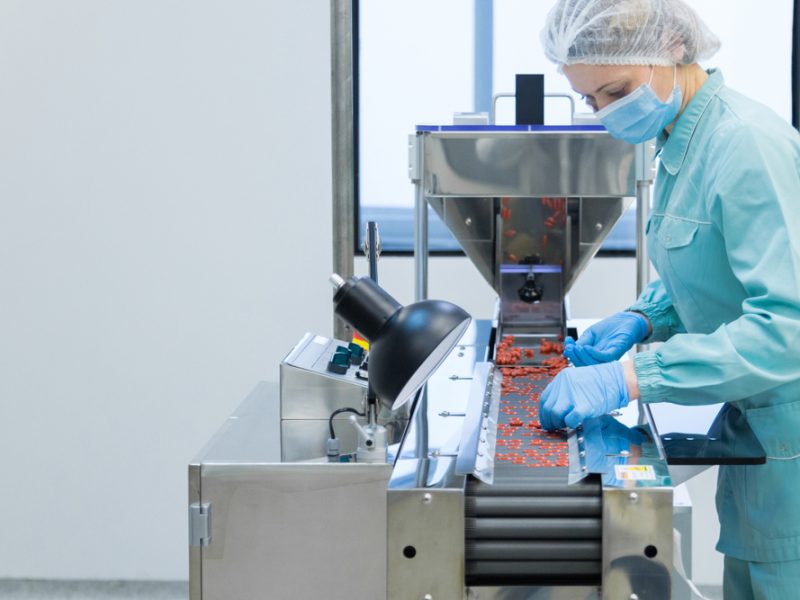
The EU’s pharmaceutical legislation, presented last April, provides for improved access to orphan drugs in the fight against rare diseases. While patients’ associations welcome the text, some proposals still need to be improved.
The long-awaited reform of the EU’s pharmaceutical legislation, also known as the Pharmaceutical Package, aims to establish a framework for the use of medicines, from production to clinical trials and marketing authorisation.
“Specific provisions will apply to orphan medicines, to boost research and development in rare diseases,” said health commissioner Stella Kyriakides, during the presentation of the pharmaceutical package in April.
Orphan medicines are drugs developed for the treatment of rare diseases, that would not be profitable to produce without assistance from public funds.
“The review of pharmaceutical legislation goes in the right direction but could go further,” Yann Le Cam, Chief Executive Officer at Eurordis, the European organisation for rare diseases, told EURACTIV.
There are currently more than 6,000 known rare diseases, 95% of which have no treatment option, or orphan drugs, according to Commission figures.
“Current investments in developing medicines do not always prioritise the greatest unmet medical needs,” Kyriakides acknowledged.
With 25 million European citizens suffering from a rare disease, the revised package includes measures to encourage the pharmaceutical industry to develop orphan drugs.
“For orphan drugs, the reform will also ensure that generics and biosimilars can enter the market as soon as the exclusivity period ends,” said Stella Kyriakides.
Companies can benefit from additional periods of market exclusivity if they address a significant unmet medical need, launch the drug in all member states, or develop new therapeutic indications for an orphan drug that has already been approved.
“We are pleased that the concept of incentive modulation has been introduced to encourage investment and research in the vast majority of rare diseases that have no therapeutic options while maintaining a level of market exclusivity that is competitive with other jurisdictions,” commented Le Cam.
Making the EU more competitive
But according to patients’ associations, the development of innovative medicines and therapies depends above all on a competitive healthcare Europe that is attractive to investors.
“Europe has lost a lot of ground to its global competitors over the last two decades. Despite a favourable regulatory and incentive framework, the market remains fragmented and there is a lack of coordination of research infrastructures, investment and access,” said Le Cam.
The association believes that Europe must be as attractive as the USA, China and India. “To make our continent even more competitive, EU policymakers should consider, for example, granting developers an extra year of market exclusivity for launching a product first on the European market,” he added.
Orphan drugs are more difficult to access, as their development can be long and costly. What’s more, they concern fewer patients and are therefore less profitable for the pharmaceutical industry.
For the Commission, this is particularly true for diseases that pose scientific challenges (e.g., limited understanding of the disease, limited basic research) or have limited commercial interest (e.g., rare diseases).
And in the event that a therapeutic drug or treatment does exist, not all EU citizens are able to treat themselves, due to unequal access to care in different countries. But according to Eurordis, local production of orphan drugs would extend access to orphan drugs.
“This would attract more investment into clinical trials conducted in Europe, enabling treatments to reach EU citizens much more quickly.”
The pharmaceutical package aims to change the system of regulatory protection from a “one-size-fits-all approach” to a “more targeted approach” that will promote patient access to affordable medicines in all member states, according to the Commission’s proposal.
The European Medicines Agency (EMA) will also support the development of these innovative medicines.
More difficult for children
The vast majority of rare diseases are genetic (80%), and mainly affect children (75%), leading to sometimes lifelong sequelae, difficulties in accessing education and family upheaval, according to the Alliance Maladies Rares.
Treatments for children with rare diseases are even more difficult to access than those for adults, but “significant progress has been made”, according to the Health Commissioner.
“However, in cases where diseases are biologically different in adults and children, such as pediatric cancers, mental and behavioural disorders or neonatal conditions, only a limited number of medicines have been developed,” she acknowledged.
The proposed new EU pharmaceutical legislation will “encourage the development and marketing of paediatric and orphan drugs”, said French MEP Véronique Trillet-Lenoir (Renew) in a press release on Wednesday.
But according to Le Cam, the Commission’s new pharmaceutical package is also to be more precise in certain proposals.
“What constitutes a ‘significant reduction in morbidity or mortality’ is not currently clear, nor are the medical conditions that can be considered ‘significantly debilitating’,” Le Cam concluded.
Political discussions on the pharmaceutical package will continue in the Parliament and the Council before its approval.
[Edited by Nathalie Weatherald]









